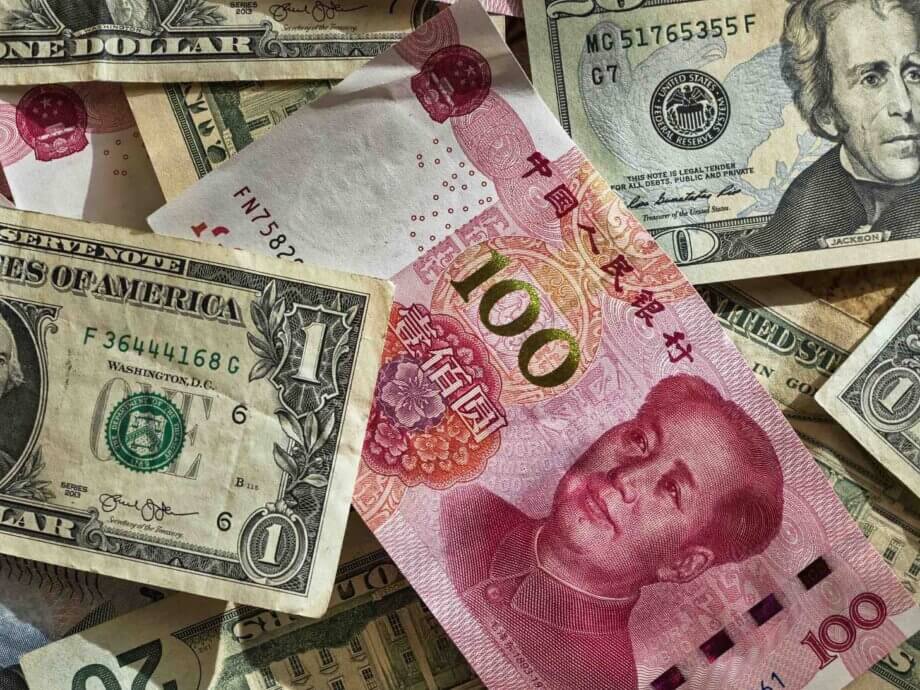Cash in the Digital Age: Singapore’s Enduring Money Changers
In the heart of Singapore’s bustling financial district, where global banking giants orchestrate multi-billion-dollar transactions in the blink of an eye, a different kind of commerce thrives. At The Arcade, a modest, three-story mall abutting Raffles Place, hundreds of people line up daily to exchange hard currency at one of around 30 money changer stalls. Here, amid the digital revolution, cash is still king.
- Cash in the Digital Age: Singapore’s Enduring Money Changers
- Why Cash Still Matters in Singapore
- The Digital Challenge: Cash Usage in Decline
- Tourism, Travel, and the Demand for Cash
- How Money Changers Compete: Margins, Rates, and Regulation
- Adapting to Change: Innovation and Consumer Choice
- Singapore’s 24-Hour Money Changers: Meeting Demand Around the Clock
- The Road Ahead: Will Cash Disappear?
- In Summary
Despite Singapore’s reputation as a leader in cashless payments and digital finance, the city-state remains home to nearly 250 licensed money changers. These businesses offer a staggering array of over 150 currencies, serving everyone from office workers seeking the best rates to sailors and tourists needing cash for their next destination. The persistence of these cash-based businesses raises a compelling question: Why does cash endure in one of the world’s most technologically advanced economies?
Why Cash Still Matters in Singapore
Singapore’s status as a global financial hub is well established. The city is home to the regional headquarters of banking titans like JPMorgan Chase, Bank of China, and UBS, and manages more than US$4 trillion in assets. Yet, its role as a shipping and transit hub is equally significant. Hundreds of vessels anchor in Singapore’s harbor each day, making it one of the world’s busiest maritime ports. For decades, this has made Raffles Place—and The Arcade in particular—a prime location for money changers.
Many sailors disembark needing to swap cash from their previous ports and acquire currency for their next journey. Office workers, too, frequent these stalls, drawn by exchange rates that often beat those offered by banks. The Arcade’s money changers have become a fixture, offering a tangible, old-world alternative to the digital transactions that dominate the surrounding skyscrapers.
Abdul Haleem, a 65-year-old veteran whose family has run City Money Changers since 1980, sums up the sentiment shared by many in the industry:
“Cash will remain forever.”
His optimism is echoed by Mohamed Rafik, a partner at Arcade Money Changers, who points to the steady influx of new licensees as evidence that the business remains viable. Rafik argues that while digital wallets may seem attractive, their overheads could eventually lead to higher rates, making cash exchanges competitive in the long run.
The Digital Challenge: Cash Usage in Decline
Despite the resilience of money changers, the broader trend in Singapore is unmistakable: cash usage is declining rapidly. According to the 2024 Global Payments Report by Worldpay, cash accounted for just 15% (S$23 billion) of point-of-sale transaction value in 2023. By 2027, this figure is projected to fall to a mere 7% (S$11.4 billion). Digital wallets—such as Apple Pay, GrabPay, and DBS PayLah!—are expected to surge from 22% (S$33.6 billion) of transaction value in 2023 to 44% (S$75 billion) by 2027, overtaking credit cards as the preferred payment method.
This shift is not unique to Singapore. Across the Asia-Pacific region, cash usage dropped from 19% of in-store transaction value in 2022 to 16% in 2023, and is expected to fall below 10% by 2027. Globally, cash transactions decreased by 8% in 2023 and are projected to account for just 11% of consumer spending by 2027. Singapore, however, leads Southeast Asia in cashless adoption, with the lowest cash transaction value compared to neighbors like Indonesia (38%), Malaysia (32%), and Thailand (46%).
Public attitudes reflect this transition. A December 2023 survey found that 44% of Singaporeans believe cash will be irrelevant within a decade, though 34% still prefer using cash for purchases. This duality underscores the complex relationship Singaporeans have with physical currency: while many embrace digital convenience, a significant minority still value the tangibility and security of cash.
Tourism, Travel, and the Demand for Cash
One of the key drivers sustaining Singapore’s money changers is tourism. The city’s proximity to Southeast Asian holiday hotspots—such as Phuket, Ha Long Bay, and Bali—means that travelers often need cash for street food, small restaurants, or tips in destinations where digital payments are less prevalent. During peak travel seasons, such as school holidays, demand for foreign currency surges.
Money changers also serve as a barometer for travel trends. While US dollars and Malaysian ringgit were once the most sought-after currencies, recent years have seen a spike in demand for Japanese yen, Korean won, and Taiwanese dollars. This shift mirrors the record number of tourists flocking to Japan, drawn by a weakened yen and the country’s rich cultural offerings.
For many travelers, cash offers practical advantages. It helps avoid the higher exchange rates and foreign transaction fees imposed by credit cards. For others, like teacher Christina Ng, cash provides a sense of security and an educational opportunity for her children:
“I want them to learn how to use the cash and do the transaction, so they need to see the physical money. We don’t want them to just tap, tap, tap without actually knowing what they’re spending on.”
How Money Changers Compete: Margins, Rates, and Regulation
Money changers in Singapore operate on razor-thin margins, often making fractions of a penny on each dollar exchanged. Their competitive edge lies in offering better rates than banks, attracting customers who shop around for the best deal. For example, on a recent afternoon, City Money Changers offered a US dollar at S$1.2900, compared to S$1.2972 at DBS, Singapore’s largest bank. While digital platforms like YouTrip sometimes offer even better rates, the convenience and immediacy of cash remain appealing for many.
High volumes are essential to profitability. Some changers can turn over S$500,000 (US$389,000) in a single day. Despite handling such large sums, security is managed through extensive surveillance—Singapore boasts around 90,000 security cameras citywide—and a culture of mutual vigilance among stallholders. Violent crime is rare, and the community of money changers acts as its own first line of defense against suspicious activity.
Regulation is stringent. The Monetary Authority of Singapore (MAS) requires money changers to conduct customer due diligence for cash transactions exceeding S$5,000, or S$20,000 if funded from a bank account. This includes verifying identities and maintaining detailed transaction records. The industry is considered to pose a “moderate level” of money-laundering risk due to its cash-intensive nature, and past scandals—such as the 1MDB case in 2016—have led to increased scrutiny and tighter compliance requirements.
Adapting to Change: Innovation and Consumer Choice
Money changers are not standing still in the face of digital disruption. Many now offer additional services such as international remittance, bill payment, and even door-to-door currency delivery. Some have embraced online platforms, allowing customers to order foreign cash for home delivery or use 24-hour ATMs to withdraw currency at real-time rates. These innovations help bridge the gap between traditional cash services and the expectations of a digital-savvy clientele.
Singapore’s money changers also play a crucial role in financial inclusion. Not everyone has access to bank accounts or mobile wallets—especially the elderly, migrant workers, and small business owners. For these groups, cash remains a vital means of exchange, and money changers provide essential access to physical currency. The Money Changers Association of Singapore emphasizes the importance of maintaining consumer choice and ensuring that no one is left behind as the country moves toward a cashless future.
As the Money Changers Association notes:
“Cash isn’t disappearing—it’s evolving alongside digital solutions. Money changers continue to play a crucial role in supporting cash-based transactions, financial inclusion, and consumer choice.”
Singapore’s 24-Hour Money Changers: Meeting Demand Around the Clock
For travelers and locals alike, the convenience of 24-hour money changers is a major draw. Locations such as Mustafa Centre, Changi Airport, and The Arcade at Raffles Place offer round-the-clock access to a wide range of currencies. Automated kiosks and online platforms further expand options, allowing customers to exchange money at any hour without the need to queue.
Consumer advice abounds: compare rates using apps, avoid airport exchanges for large sums, bring identification, and stick to licensed changers. For those seeking cash-free alternatives, multi-currency cards and digital wallets offer competitive rates and lower fees, but cash remains indispensable for certain transactions and destinations.
The Road Ahead: Will Cash Disappear?
The future of cash in Singapore is a subject of debate. On one hand, projections point to a continued decline in cash usage, with digital wallets and cards dominating point-of-sale transactions by 2027. On the other, the enduring presence of money changers, the needs of specific communities, and the unpredictability of global travel suggest that cash will not vanish entirely.
Industry veterans like Abdul Haleem acknowledge the challenges ahead. Business is about half of pre-pandemic levels, competition is fierce, and currency fluctuations can erode profits overnight. Yet, there is a sense of resilience and adaptability among money changers. As Thamim A.K., a trader with 40 years of experience, puts it:
“The bank notes business is still there. It’s growing, in fact. It’s fighting with digital.”
Ultimately, cash and digital payments are not mutually exclusive. They coexist, each serving different needs and preferences. As Singapore continues its march toward a cashless society, the city’s money changers stand as a testament to the enduring value of physical currency—and the adaptability of those who trade in it.
In Summary
- Despite Singapore’s leadership in digital payments, nearly 250 money changers continue to operate, offering over 150 currencies.
- Cash usage is projected to fall from 15% of point-of-sale transactions in 2023 to just 7% by 2027, with digital wallets set to dominate.
- Money changers thrive due to tourism, travel needs, and the demand for better exchange rates and tangible currency.
- Stringent regulations and compliance measures are in place to mitigate money-laundering risks in the cash-intensive industry.
- Money changers are innovating with new services and digital platforms, while also supporting financial inclusion for those without access to digital banking.
- Cash is unlikely to disappear entirely, as it continues to offer security, privacy, and accessibility for many Singaporeans and visitors.












